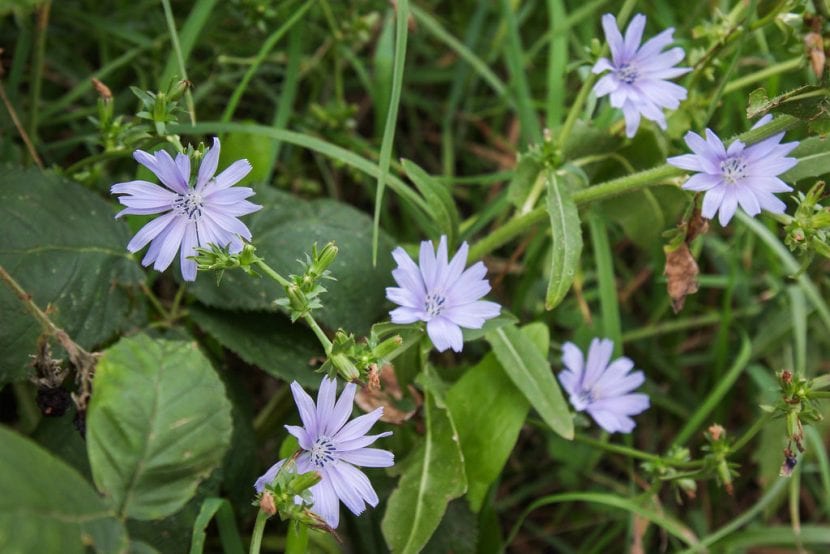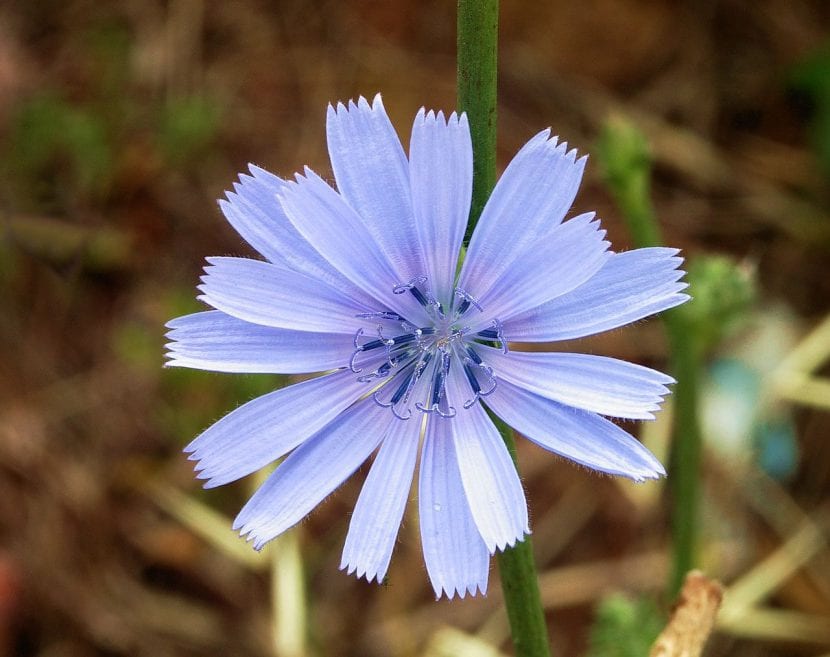
La wild chicory It is a perennial herb that we can find in the temperate regions of the Old World. It produces small but very pretty flowers, which is why it would not be surprising if more than one and more than two had it on their balcony as an ornamental plant. Its most widespread use, however, is none other than gastronomic. Even so ... there are those who use it as a medicinal.
As you see, this it is not just any herb. Next I will tell you much more about it so that you know how to take advantage of it.
What are their characteristics?
Wild chicory, whose scientific name is Cichorium intybus, it is a robust perennial herb that can reach one meter in height. It has a single deep, conical, thick and pivoting root. The basal leaves are spatulate, semi-fleshy and slightly toothed; and those that are in the upper part of the stem are bracts, that is, leaves that protect the flower.
During the summer, blue-lilac, pink or white ligulate inflorescences sprout. These flowers are hermaphroditic. The fruit is an achene (dried fruit whose skin is not attached to the seeds).
How do you take care of yourself?
If you want to have any, we recommend providing the following care:
- Location: outside, in full sun.
- Earth:
- Pot: universal growing substrate.
- Garden: it is indifferent as long as it has good drainage.
- Irrigation: 2 times a week in summer and every 4-5 days the rest of the year.
- Subscriber: from spring to summer with an organic compost, such as guano for example.
- Multiplication: by seeds in spring. Direct sowing in seedbed.
- Rusticity: withstands cold and frosts down to -7ºC.
What uses does it have?
Gastronomy
Wild chicory leaves are consumed in salads, and the roasted root is used as a substitute for coffee or as an adulterant of the latter.
Medicinal
In infusion it is used to treat diseases of the digestive system and liver, and as a stimulant of bile; and in plasters for skin irritations. Its properties are:
- diuretic
- sedative
- internal antiparasitic
- healing
- detoxifying and purifying
- improves liver function
- stimulates bile secretion
The method of use is as follows:
- In cooking for digestive problems, cook 5 to 10g in a liter of water for 5-8 minutes. Rest 5-10 minutes and drink.
- To purify and / or detoxify, juices are made from the entire plant.
- In the form of a poultice alone or in combination with other plants.
- In salads it can be consumed daily.

What did you think of wild chicory?
That I am going to look for this plant or seeds anywhere !!!. I am very interested in it.! When does it bloom ?? To recognize it.
Hello Lola.
From here you can buy it.
Greetings.
Beautiful memory of my childhood as a good descendant of Calabrians this was a classic in the kitchen, combined with crickets they prepared it in wrapped children, stews, sautéed with garlic etc. Does anyone know if the flower is eaten?
Hello Adalberto.
Well, I understand that they don't eat flowers. I've been looking for information and haven't found anything about it.
For the rest, it is very interesting as a culinary plant, yes 🙂
Regards!
Thanks for the info !